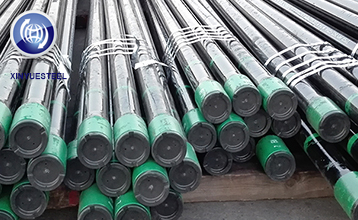Supply and demand are both weak, steel prices will fluctuate at high levels
Oct. 26, 2021
"Since October, steel prices have generally shown a trend of rising and falling. With the continuous introduction of macro-control policies and changes in the steel supply and demand pattern, the steel market has continued to perform new operating trends. The recent release of domestic economic operating data has determined the later market. It has played a certain guiding role. In my opinion, the market outlook will continue the weak pattern of supply and demand, and steel prices will remain high and fluctuating.” On October 22, Qi Jianfeng, manager of the futures department of Shanxi Steel Marketing Corporation, told me in an interview with the author. The operation situation of the steel market in the fourth quarter was analyzed and forecasted.

First, the pressure of domestic economic adjustment has appeared, and investment has continued to slow down. According to Qi Jianfeng, according to data from the National Bureau of Statistics, in the third quarter of this year, China's GDP grew by 4.9% year-on-year, which was 0.1% lower than the average growth rate of the two years in the first half of this year. In the first nine months of this year, national investment in fixed assets (excluding rural households) reached 3,9782.7 billion yuan, an increase of 7.3% year-on-year, and an average growth rate of 3.8% in two years. The average growth rate was 0.2 percentage points lower than the previous eight months. In September, China's PMI (Purchasing Managers Index) was 49.6%, a decrease of 0.5% from the previous month. It was the first time since the beginning of this year that it fell below the 50% threshold. The rate of decline has accelerated. Although China's economic operations in the first three quarters of this year have generally continued to recover, industrial production has dropped significantly due to the current spread of the epidemic and the implementation of the dual energy consumption control policy.
Second, steel companies continue to limit production, and it is difficult to see a clear turning point in the short term. According to data from the National Bureau of Statistics, in the first nine months of this year, China's crude steel output reached 805.89 million tons, a year-on-year increase of 2%. Among them, the output of crude steel in September reached 73.75 million tons, down 21.2% year-on-year; the average daily output of crude steel reached 2.4583 million tons, down 8.45% from the previous month. Since the second half of this year, under the dual control of energy consumption, the steel production limit has become stricter, and the two ministries and commissions recently announced the notice of staggered production in the steel industry during the heating season of "2+26 cities". Qi Jianfeng predicts that the steel supply side will remain the same in the fourth quarter Weaker. Under the requirements of some provinces to "complete the task of reducing production for the whole year in November", although the market has expectations for a production recovery in December, it is expected that production recovery will be limited under the background of limited power and production restrictions in winter.
Third, the demand in downstream industries is differentiated, and the overall situation is still weak. Judging from the downstream industry data in September, the sales area of commercial housing in China fell by 13.17% year-on-year, and the area of newly started housing fell by 13.54% year-on-year. The overall performance of real estate remains weak. Infrastructure construction investment dropped by 13.54% year-on-year. Retail sales in the automotive and home appliance markets decreased by 11.8% year-on-year and increased by 6.6% year-on-year, respectively. Due to the greater impact of power restriction policies in some industries, the continued decline in real estate consumption, the continued cooling of investment, and the shortage of chips in the automotive industry, the current demand for steel is generally weak.
Fourth, steel inventories are generally in a declining stage. Since August this year, steel mill inventories and social inventories of the five major steel products have shown a downward trend, and are lower than the same period last year. In the situation where both supply and demand have been weak in the past two months, the supply-side reduction has become more pronounced. Qi Jianfeng predicts that in October and November, the task of restricting production will remain severe, which is conducive to the digestion of steel inventories. It is recommended that market participants pay attention to the off-season market in December. If there is a phased loosening of production restrictions by then, the supply and demand structure will be obvious variety.



